Yin and Yang ~
The Taijitu (Yin Yang symbol) is one of the oldest life symbols . It represents one of the most fundamental and profound theories of ancient Taoist philosophy. At its heart are the two poles of existence, which are opposite but complementary. The light, white Yang moving up blends into the dark, black Yin moving down. Yin and Yang are dependent opposing forces that flow in a natural cycle, always seeking balance. Though they are opposing, they are not in opposition to one another.
As part of the Tao, they are merely two aspects of a single reality. Each contains the seed of the other, which is why we see a black spot of Yin in the white Yang and vice versa. They do not merely replace each other but actually become each other through the constant flow of the universe.
Yin is female and yang is male. They fit together as two parts of a whole.
Yin is the black side with the white dot on it and yang is the white side with the black dot on it. The relationship between yin and yang is often described in terms of sunlight playing over a mountain and in the valley. Yin (literally the 'shady place' or 'north slope') is the dark area occluded by the mountain's bulk, while yang (literally the 'sunny place' or 'south slope') is the brightly lit portion. As the sun moves across the sky, yin and yang gradually trade places with each other, revealing what was obscured and obscuring what was revealed.
Yin is characterized as slow, soft, yielding, diffuse, cold, wet, and passive; and is associated with water, earth, the moon, femininity and nighttime.
Yang, by contrast, is fast, hard, solid, focused, hot, dry, and aggressive; and is associated with fire, sky, the sun, masculinity and daytime.
The Yin Yang symbol is displayed in many ways. It has generally the same appearance and meaning regardless of how it is displayed. Two opposing forces or two opposite qualities or parts of the whole, each transforming into the other during a continuous cycle of rotation and change. Dark changes to light and light changes to dark repeatedly. The light and dark spots in the larger areas represents there is always some dark or opposite quality in the light and some light or opposite quality in the dark.
In relation to everything, war, battle, fighting, martial arts, Gung Fu, I will explain in person. Ask me.
~ The Teacher
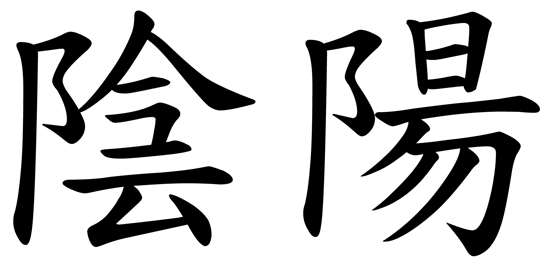



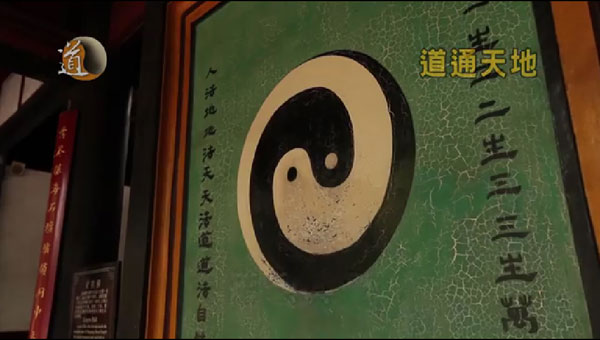
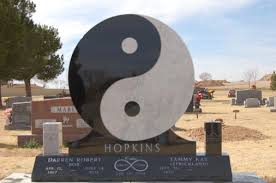 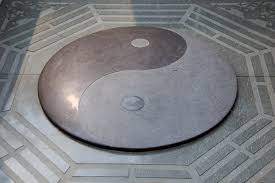
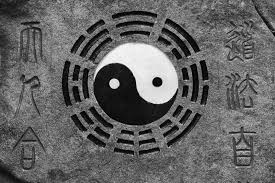 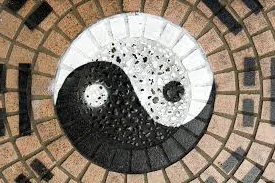
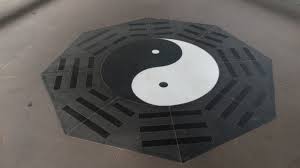 
 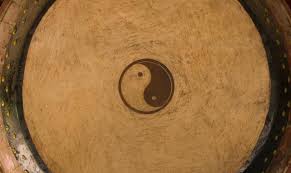
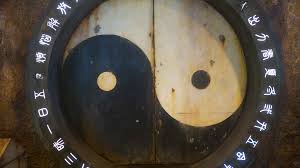 
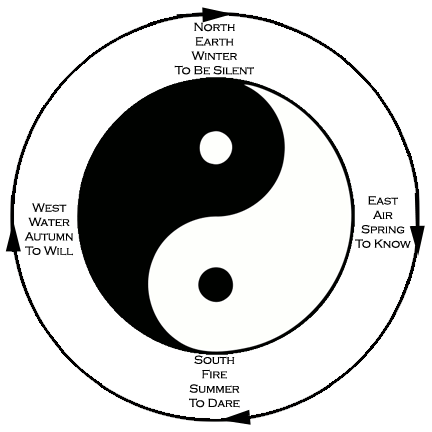
The Bagua (Eight Ways)
 Before-Heaven Bagua: The original form, Before-Heaven Bagua: The original form,
said to come from markings on a tortoise shell, shows each element with its opposite (yinyang). The symbols are from the I-Ching (Yijing).
Probably the best-known diagram in Chinese culture is the Bagua. The Bagua (ba gua literally means "eight ways" or "eight directions") is one of the oldest forms in this Chinese tradition. Its earliest form dates back almost 5,000 years. It is the foundation of the I Ching (Yijing), or Book of Changes. It is considered to be a symbol of good luck, and eight is the luckiest number.
The earlier "Before Heaven" form of the diagram shows each of eight elements arranged opposed to its opposite. Today this form is most commonly associated with various schools of Tai Chi. It is also closely associated with Taoism.This is the form that Sun Tzu used in designing his system. All the elements in the "Before Heaven" form—heaven, earth, fire, water, lake, mountain, wood, thunder—are used either directly or as symbols in the text. |
 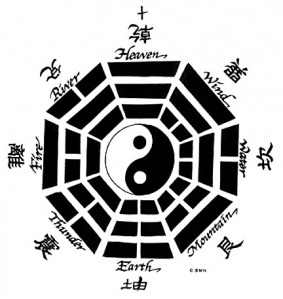 

The After-Heaven Bagua are an unbalanced arrangement of the same elements. This arrangement is meant to reflect the dynamic universe.
Today, the Bagua is best known in its "After Heaven" form from Feng Shui, the Chinese art of creating harmonious living spaces. From this, you can see how positions have changed. Though it has many forms, the basic purpose of the Bagua is to show relationships between natural elements. In Feng Shui, these Bagua relationships include colors and areas of your life such as career, marriage, wealth, children, and so on. The eight sides also connect with eight trigrams (of the 64) in the I Ching. |
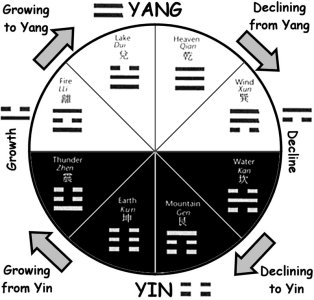 
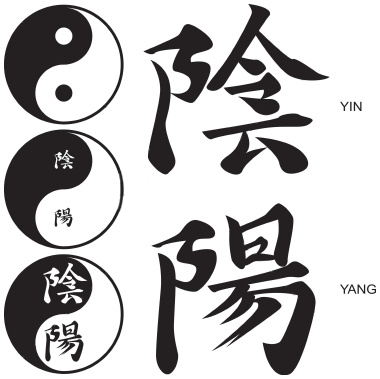  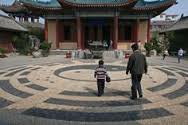  
ALL THE EXAMPLES ABOVE ARE AS I ORIGINALLY ACCEPTED
THE 2 EXAMPLES BELOW ARE OPPISITE.
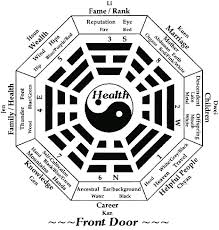 
|



